The Mount Everest Base Camp Trek in Nepal is one of the world’s best bucket list hikes. In less than 2 weeks, you can trek to the foot of Mt Everest and other snowy peaks in the Himalayan mountains.
The good news is that it’s not a super difficult hike, and you don’t need a big budget to do it. The EBC trek is worth it for the fun and accomplishment alone, but you also get views of the Himalayas that are out of this world.
This travel guide will explain how you can do the Mt Everest Base Camp hike independently (with or without a tour guide), along with a recommended packing list and everything else you need to know before you go!
Best Everest Base Camp Tours
First of all, if you’d rather skip the hassle of planning your own EBC Trek, Klook has Everest Base Camp Tours starting as low as $900 USD for a full 12-day trek.
You may be able to find something cheaper than this once you land in Kathmandu, but booking online with a vetted tour company has some big advantages, and the reviews on their website are very positive.
We’ve used Klook for lots of tours and activities around the world, and they’re great! Highly recommended.
Book Now: Everest Base Camp Tours

When To Do The EBC Trek
The Mt Everest region has 4 different trekking seasons:
- March – May: High season. Best weather, with stable temperatures and bright sunny days, but the trails can get crowded. During these months you may share the EBC trail with pro climbers on the way to go summit Everest.
- June – August: Monsoon season. There’s a lot more rain during these months, and the trails are mostly empty.
- September – October: Clear days and busy trails. This is one of the most popular trekking seasons.
- November – February: Coldest season, but the weather is stable and dry. The trails are mostly clear.
I trekked in early February, and even though it was nice having the trail mostly to myself, the cold in the evenings and mornings was straight up misery.
My home state of Missouri can get very cold in the winter, but the cold has just never been my thing. If I could go back and change it, I would definitely do my Everest Base Camp hike later in the season.


Everest Base Camp Weather
Temperatures on the Mt Everest Base Camp Trek can range from 5 °C (40 °F) to 20 °C (70 °F) depending on month, and as low as -30 °C (-22 °F) at night during the winter months.
If you trek during the warmer months (Mar-May and Sep-Oct), the cold is not a big problem and shouldn’t be hard to cope with. Winter is a different story. Your snot will freeze in your nose at Gorak Shep.
Sunshine is key for winter trekking in Nepal, and thankfully you should have lots of sun in most months outside of the monsoon season. On my February hike, I often found myself shedding all my layers while trekking because I was heating up in the sun.
If you do your Everest Base Camp hike during the winter, the biggest issue is staying warm in the evenings and at night. For this, you’ll definitely want a top quality down jacket and sleeping bag.
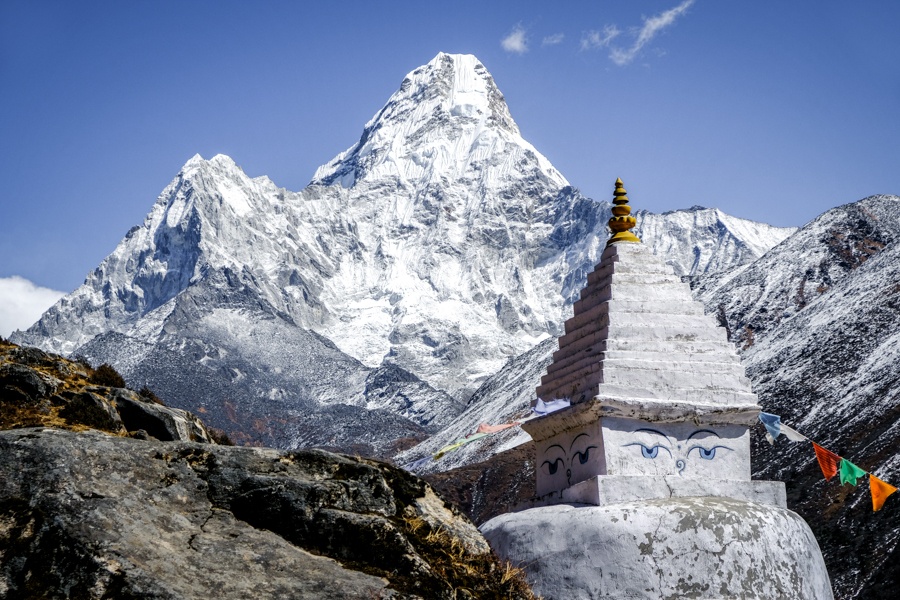
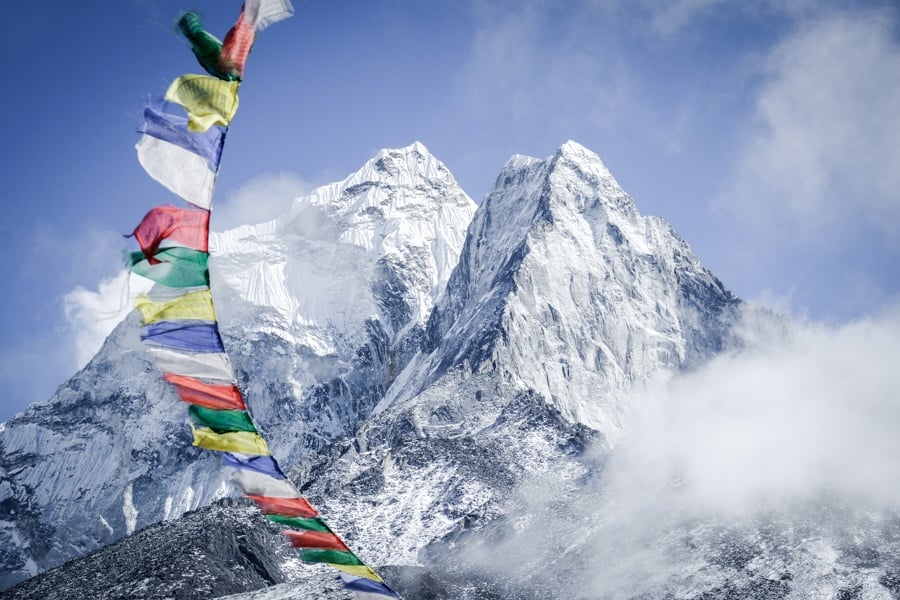
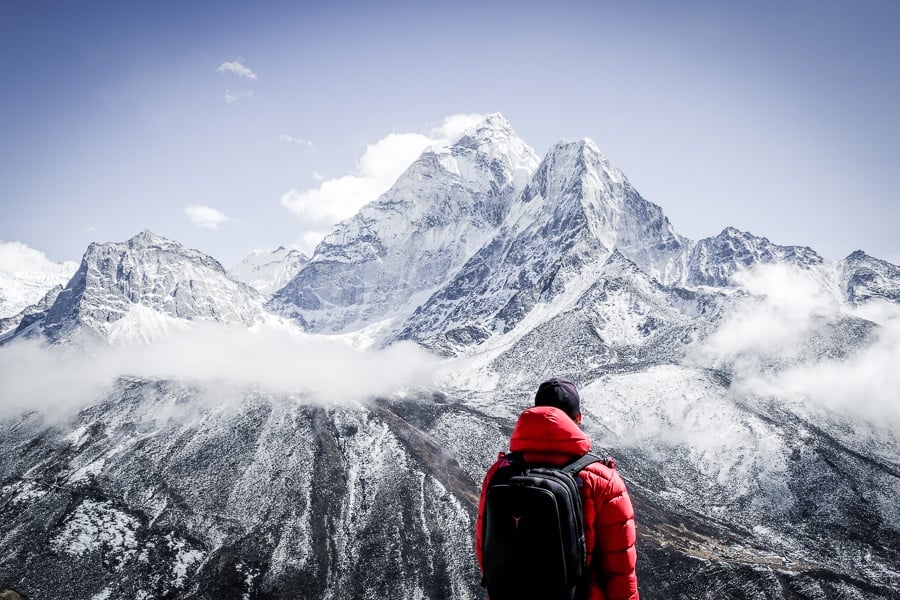
All About Everest Base Camp Trekking
My Everest Base Camp Itinerary
- Day 1: Kathmandu to Lukla to Benkar.
- Day 2: Benkar to Namche Bazaar.
- Day 3: Namche Acclimatization Day.
- Day 4: Namche to Deboche.
- Day 5: Deboche to Pangboche.
- Day 6: Pangboche to Dingboche.
- Day 7: Dingboche Acclimatization Day.
- Day 8: Dingboche to Thukla.
- Day 9: Thukla to Gorak Shep.
- Day 10: Everest Base Camp.
- Day 11: Kala Patthar to Gorak Shep to Pheriche.
- Day 12: Pheriche to Namche.
- Day 13: Namche to Lukla.
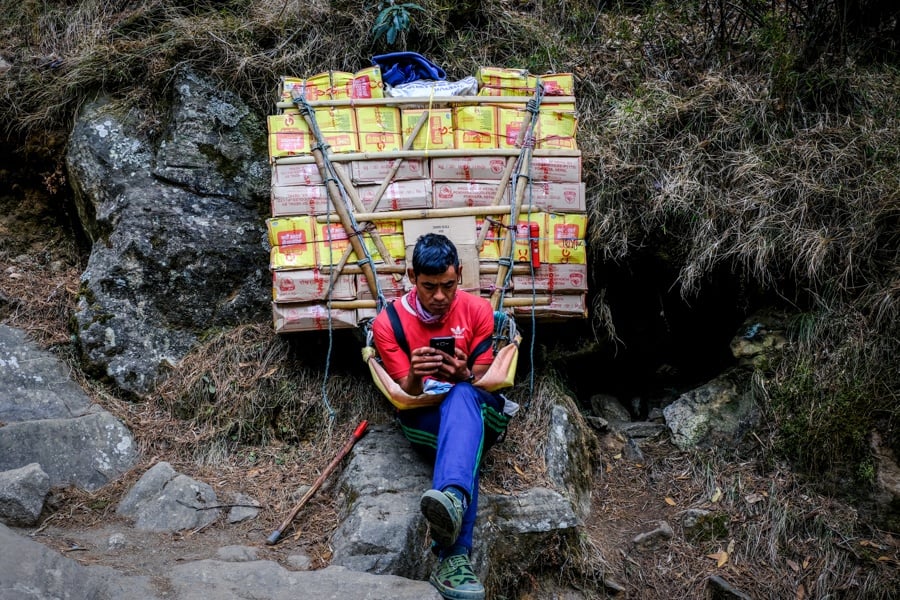
If you ever need motivation to keep going on the Everest Base Camp hike, just look at how much the porters are carrying!
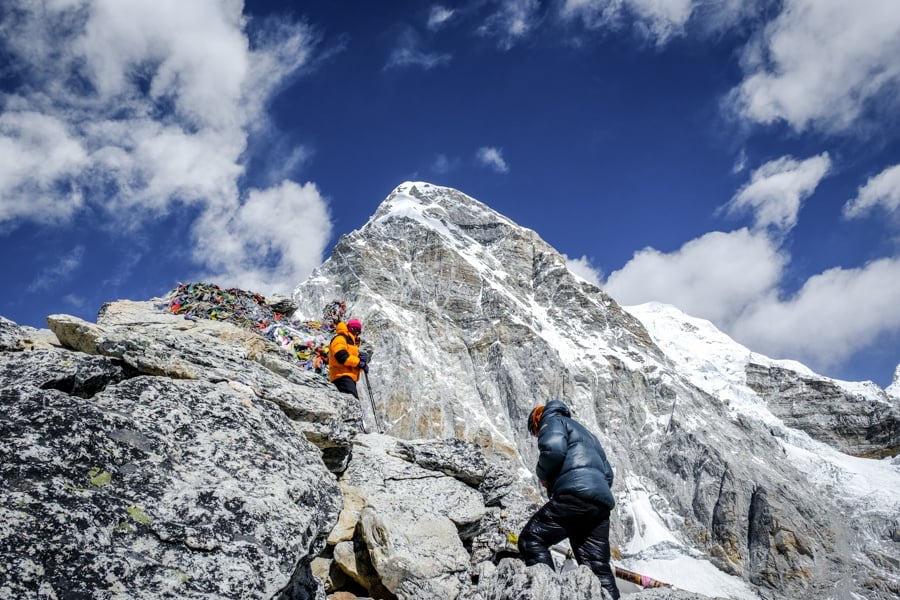
Mount Pumori as seen from the Kala Patthar viewpoint, just a short distance from Mt Everest Base Camp.
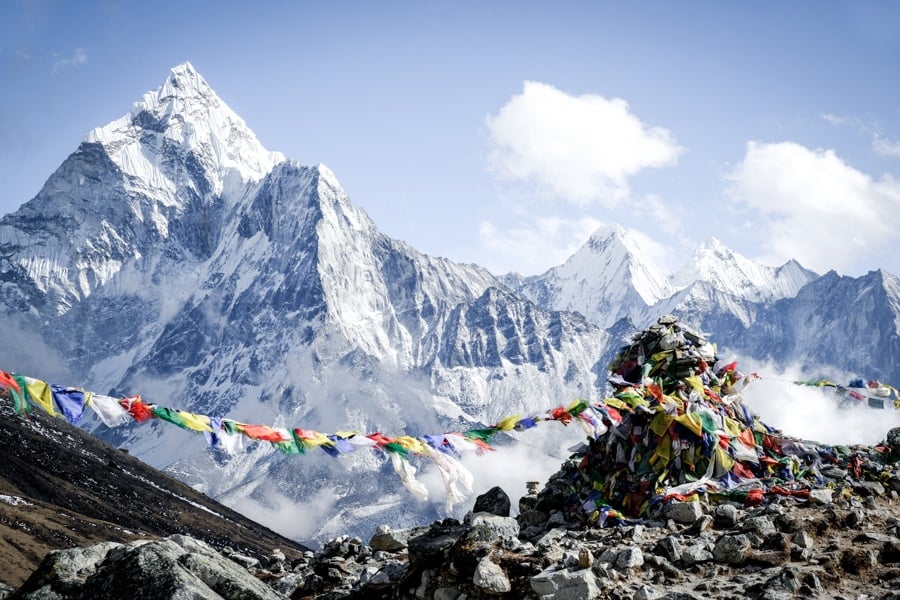
Ama Dablam, one of my favorite mountains on the Mt Everest Base Camp Trek.
EBC Trek Packing List / Gear
This isn’t a complete list of everything to bring on a Mt Everest Base Camp Trek, and you may have to change things up a little depending on what month you go, but these are just some of the basics.
You can find most of this gear in Kathmandu, but in my opinion you’ll get higher quality and a wider selection if you order online.
- Beanie: I only wore this at night, but it definitely helped keep my ears warm.
- Down Jacket: Bring the biggest, warmest DJ possible. This is your most important piece of gear. You can use it as an extra cover at night.
- Fleece Sweater: This is the only jacket you’ll need to wear while trekking most days, especially if it’s sunny.
- Shirts: Something comfy with quick dry material.
- Trekking Pants: Something lightweight and breathable.
- Thermal Underwear: May not be needed if you trek in the warmer months.
- Gloves: I only wore these at night, but they definitely helped keep my hands warm.
- Socks: Merino wool is best for staying warm and stopping moisture.
- Headlight: Smart to have at least a small one, just in case.
- Tumbler: 1 liter water bottle to refill daily on the trek.
- Sunblock: It’s easy to sunburn at high altitudes. A small bottle is plenty.
- Sunglasses: Good for snow. May not be necessary unless you plan to hike a mountain pass like Cho La.
- Hat: I wore old faithful throughout the hike.
- Watch: An altimeter watch would be fun to play with here.
- Camera: Duh. You can’t do the Mt Everest Base Camp Trek without taking lots of pictures.
- Power Bank: Bring a big power bank and you might only need to recharge it once on the whole trek.
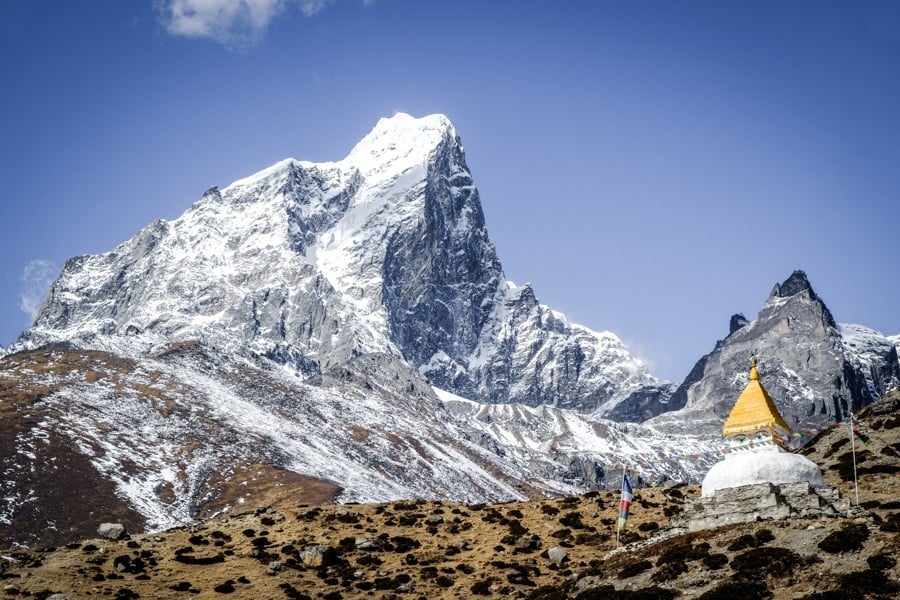
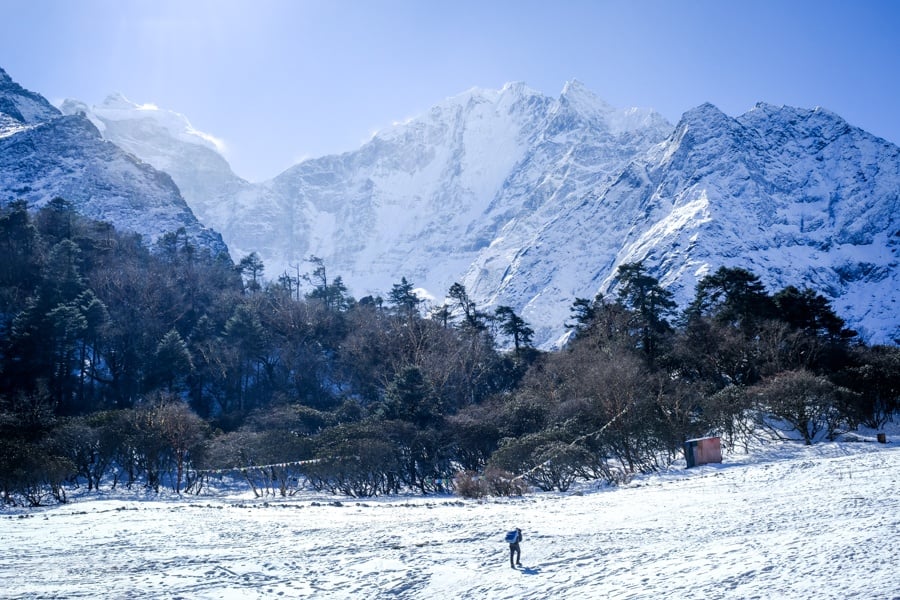
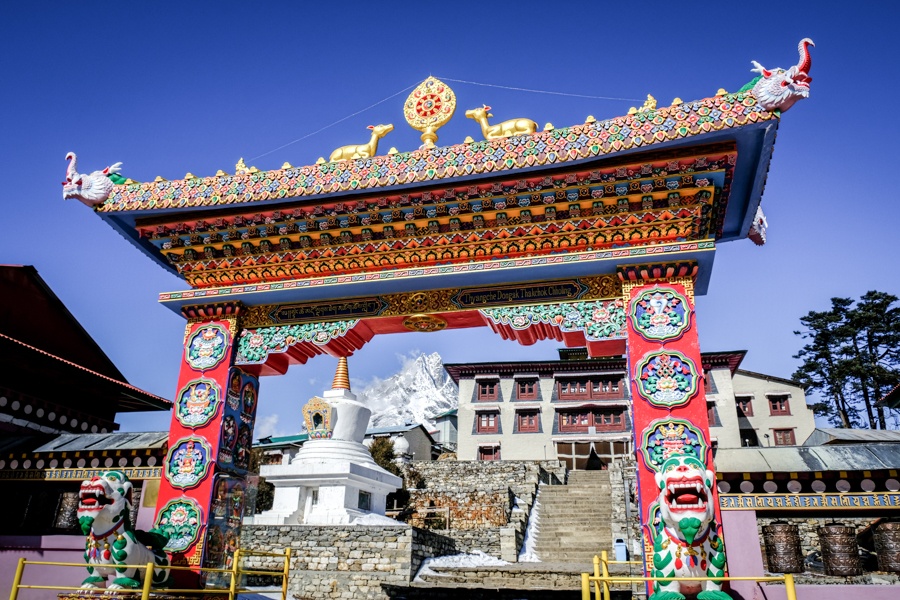
Everest Base Camp Trek Cost
For a 13 day trek, I paid about $21 USD per day for food, drinks, and room. Porter/guide was an extra $25 per day, although it’s not a requirement. Flights to Lukla were $330 return, but again not a requirement if you hike in.
You can read the sections below for more info on the daily trekking costs and what you get for your money. It’s not a very expensive trek, all things considered!
Keep in mind, these numbers are from 2020. They’ll go up a little over time. Exchange rates may also vary, so check the latest rates.
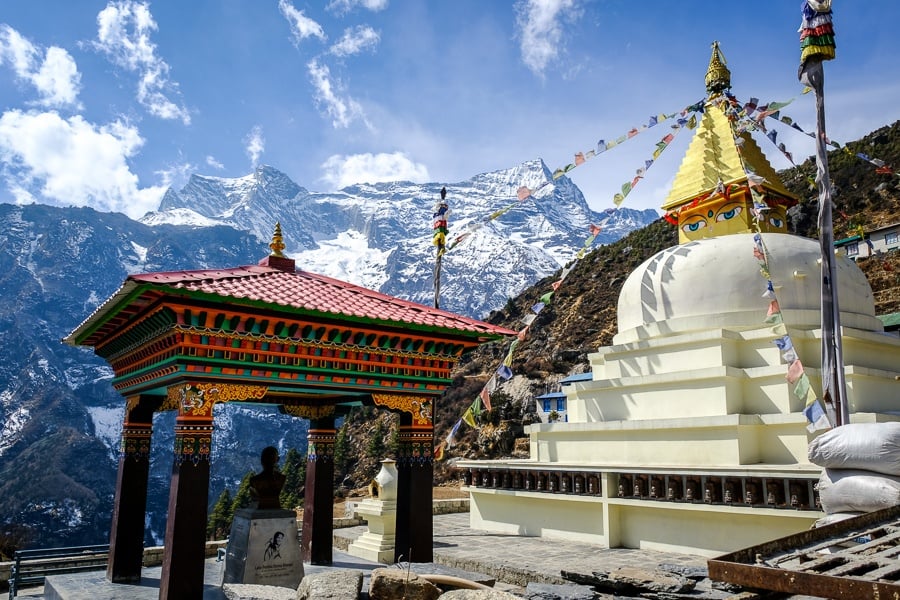
Flights
The flight to Lukla from Kathmandu is $165 USD each way. You can shop for flights to Lukla at Skyscanner.
If your budget is tight or you have extra time, you can skip this flight by hiking from Jiri to Lukla rather than flying. It only adds a couple days to the itinerary.
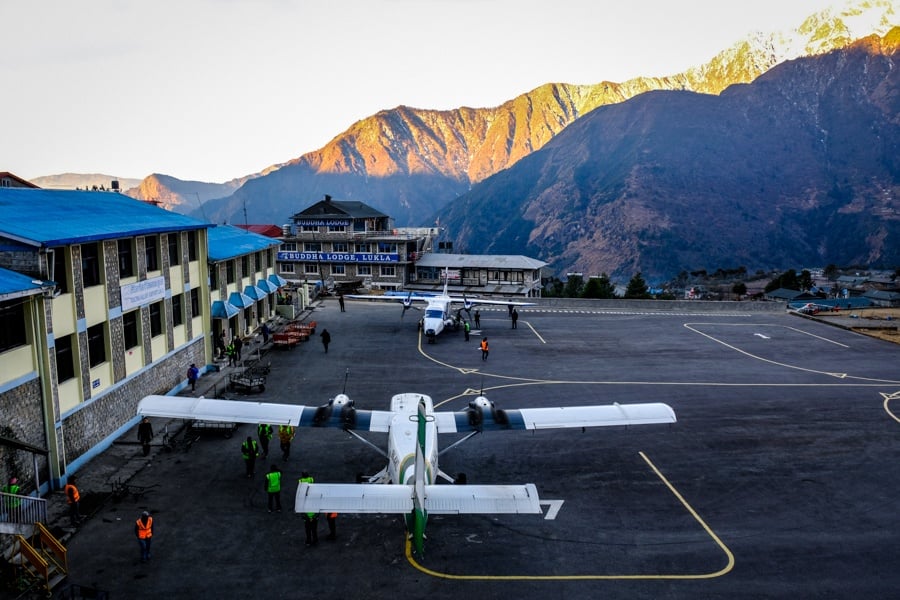
Guide / Porter / Solo
You can do the EBC trek with a guide, porter, OR independently (solo).
A guide will show you the way to Mt Everest Base Camp and help with lodging, navigation, advice, taking pictures for you, etc. A porter-guide will do these same things and also carry a 20 kg (45 lb) pack for you.
A porter or guide is NOT a requirement to do this hike, especially if you go in the warmer months when you may not need as much gear. In 2023, they were supposedly introducing a guide requirement for EBC, but so far that has not been enforced at all, thankfully.
With that said, there are some good advantages to hiring a guide, and it’s pretty cheap by Western standards. A porter is only $15 or $20 USD per day, and a porter-guide is $25 per day. A popular arrangement is to hire one porter for two hikers, splitting the cost and still making things easier for both of you.
In the end, this all depends on your budget and hiking preferences.
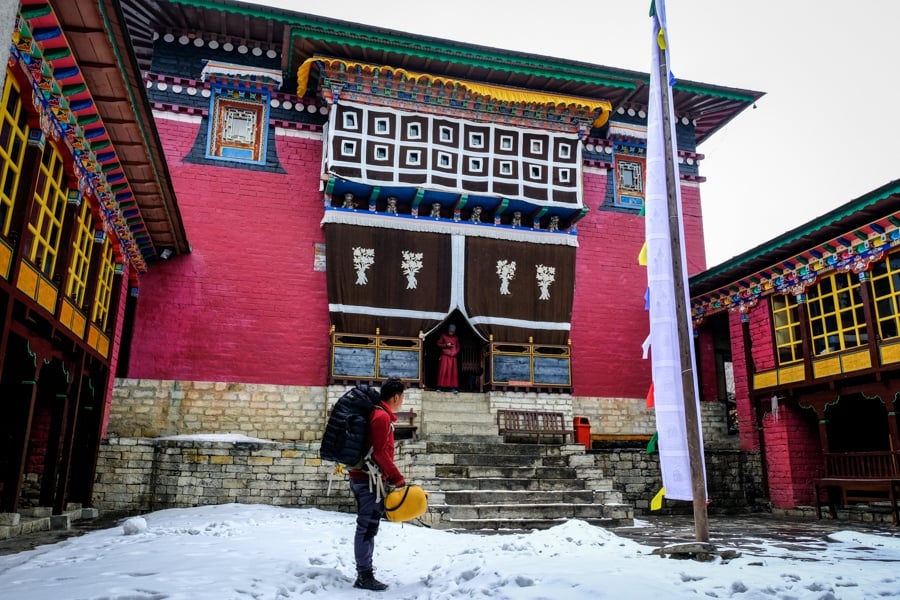
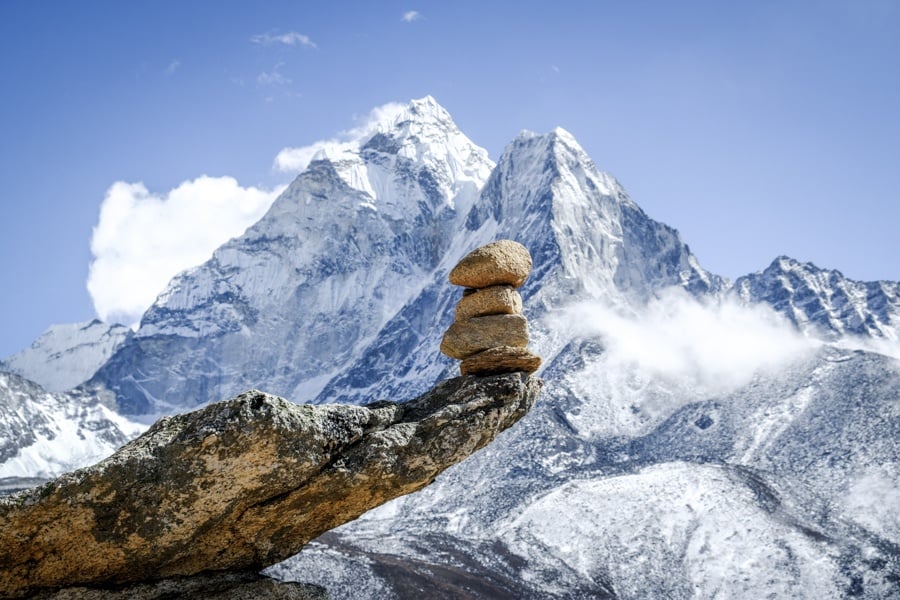
Hiking Fees
If you’re hiking EBC independently, you’ll need to be aware of two fees you have to pay near the start of the trek.
There’s a local government tax that they’ve now started collecting in Lukla. This one is currently 2,000 Rupees ($17 USD).
There’s also an Everest park fee/ticket you have to pay at the Sagarmatha National Park entrance just beyond the small village of Monjo, Nepal. This one is currently 3,500 Rupees ($30 USD).
No TIMS card is needed anymore for independent hikers. That fee has been retired for the Mount Everest Base Camp Trek.
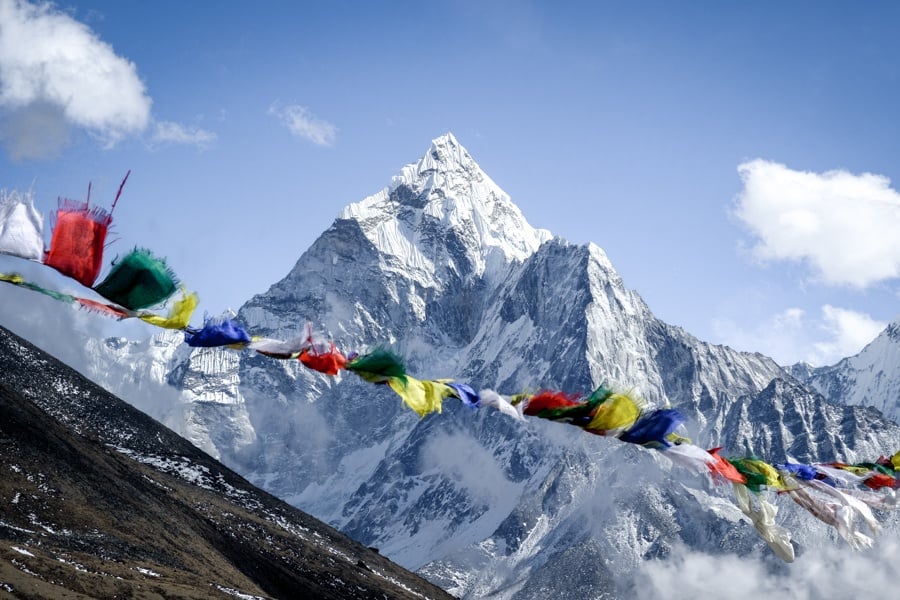
Accommodation & Amenities
Throughout the Everest Base Camp hike, you’ll stay and sleep at small guesthouses along the way, called teahouses.
This is where you get your meals and drinks for the trek, along with the occasional amenities like showers, charging, or WiFi. The teahouses start out decent, but quickly get more shabby as you go further up the trail.
You have to pay for everything you use, of course, and the prices get quite high as you go, because everything has to be hauled up on the backs of the poor porters.
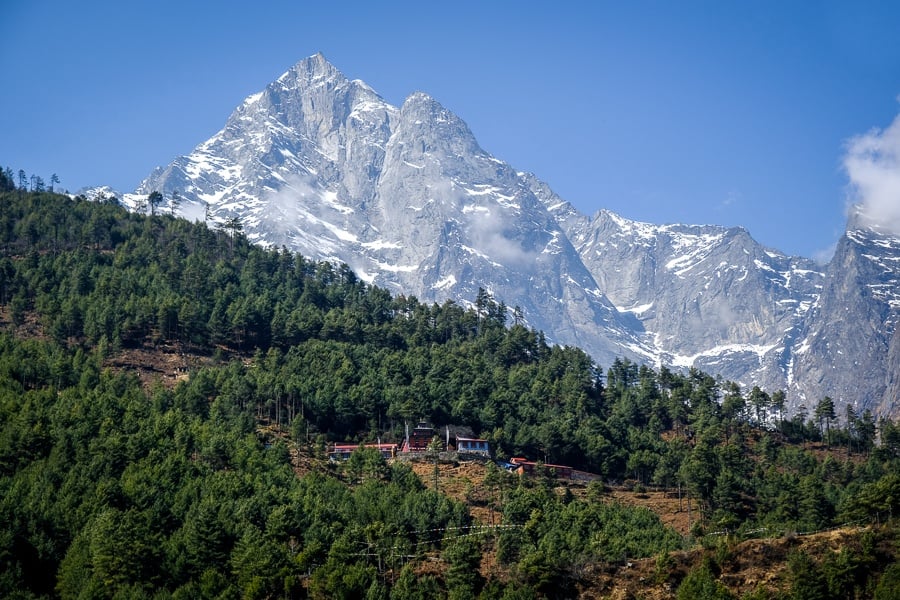
Guesthouses
The teahouses on the EBC trek are cold and dingy, with drop toilets and cracks in the walls. Don’t expect luxury.
Most rooms are free as long as you buy your meals there (the meals are how they make their money). If you stay at a lodge and don’t eat there, you’ll be expected to pay for the room.
In some cases, I was charged 500 Rupees for a room on top of my meal costs. I’m not sure why some teahouses do this and others don’t, but I never paid more than 500 Rupees for a room, and most were free with the meals.
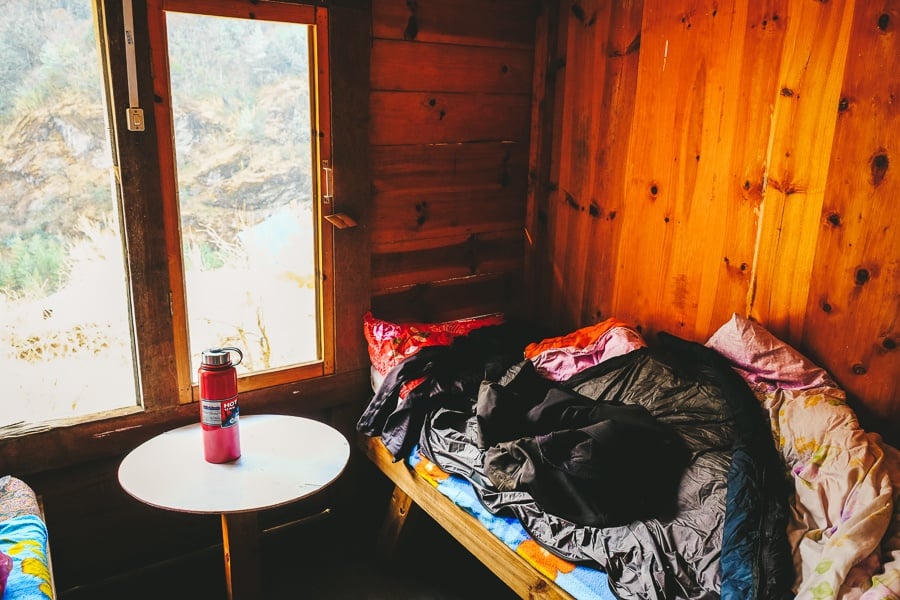
Food & Drink
I’m happy to report that the food and drinks on the Everest Base Camp hike are top notch, especially after you’ve worked up an appetite trekking.
You have western food choices, or the standard local staples like veggie fried rice, steamed momos (dumplings), and mushroom soup. Everything was hot and fresh. Meal prices for these ranged from 250 to 750 Rupees depending on altitude. Not too bad.
For drinks I tried hot chocolate, lemon/apple/mint tea, and occasionally bottled water for my tumbler. These ranged from 100 to 400 Rupees. If you want to avoid plastic bottles, there’s usually boiled water available and this is safe to drink too.
Getting enough water on the trek is never a problem. Just fill up a 1 liter tumbler in the morning, and this will last you until evening, especially since you’re likely to pass more tea houses along the trail as you’re hiking throughout the day.
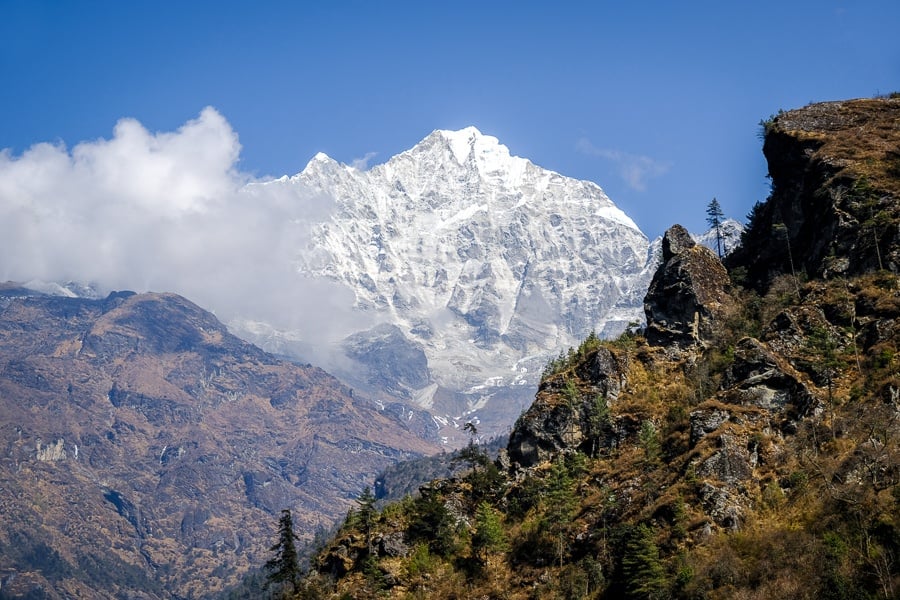
Showers
Showers are only available at a few lodges, depending on the season and how high up you are, and they cost 600 to 1200 Rupees. In the winter, water higher up will be frozen most of the time.
I never had a shower on my February EBC trek, and that seems to be the norm (although I got one or two opportunities in Namche). Yes, it’s gross. I could smell myself by trek’s end, and it wasn’t pretty.
But aside from the fact that I hate to fork out money for something as basic as a shower, I also never really got close to other people for very long on the trek, so I didn’t feel too guilty about it.
Most days were cold enough that the thought of stripping down for a shower was not really appealing, either. Your best bet is baby wipes and deodorant.
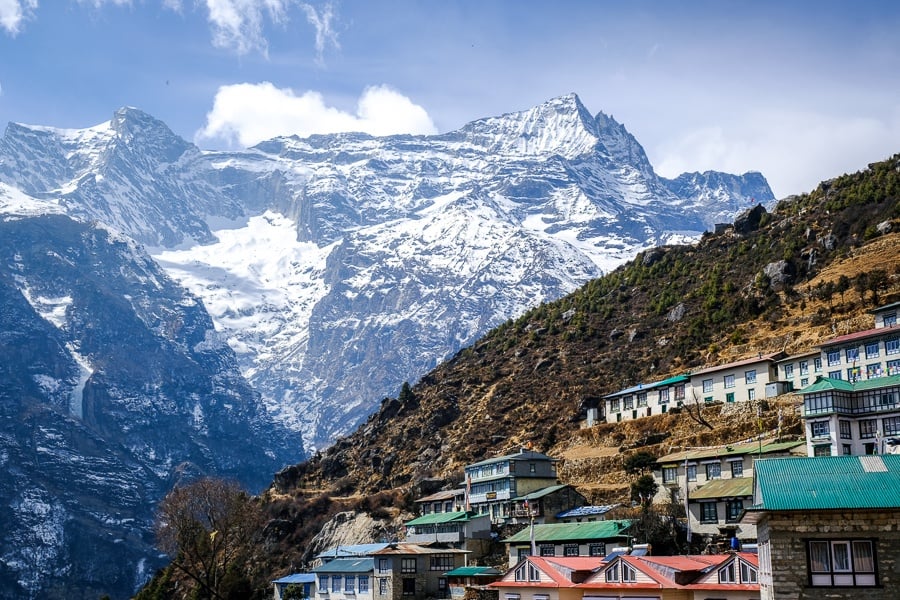
WiFi / Cell Service
WiFi costs anywhere from $5 to $10 USD per day if you buy it from the teahouses.
Alternatively, you can buy a 10 GB/30 Day Everest Link WiFi card in Namche Bazaar and use this for the entire EBC trek. During my Mount Everest Base Camp Trek the WiFi was down across the whole region, so unfortunately I wasn’t able to use either of these options.
I bought an Ncell local SIM card in the Kathmandu airport and had 3G service for half the days of the Everest Base Camp hike. Coverage is still improving in the area, so if you need to stay connected I’d definitely bring a local SIM.
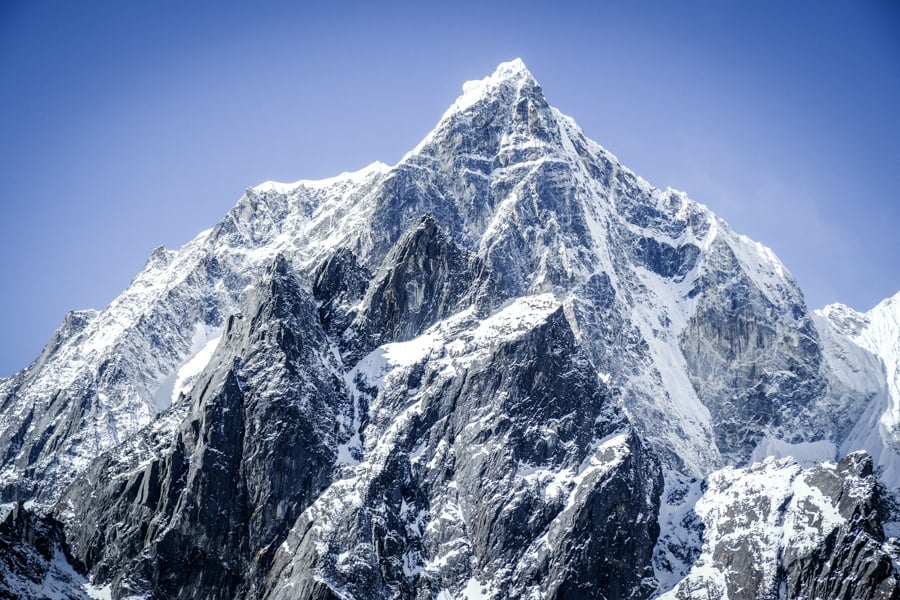
Electricity
All of the teahouses on the way to Mt Everest Base Camp sell outlet charging for electronics, and the prices range from $2 to $10 USD for a full charge, depending on how far up the trail you are.
The key is to bring a big power bank and then use this to charge all of your other electronics (phone, camera, etc). I did this and only paid once to recharge my power bank on the whole trek.
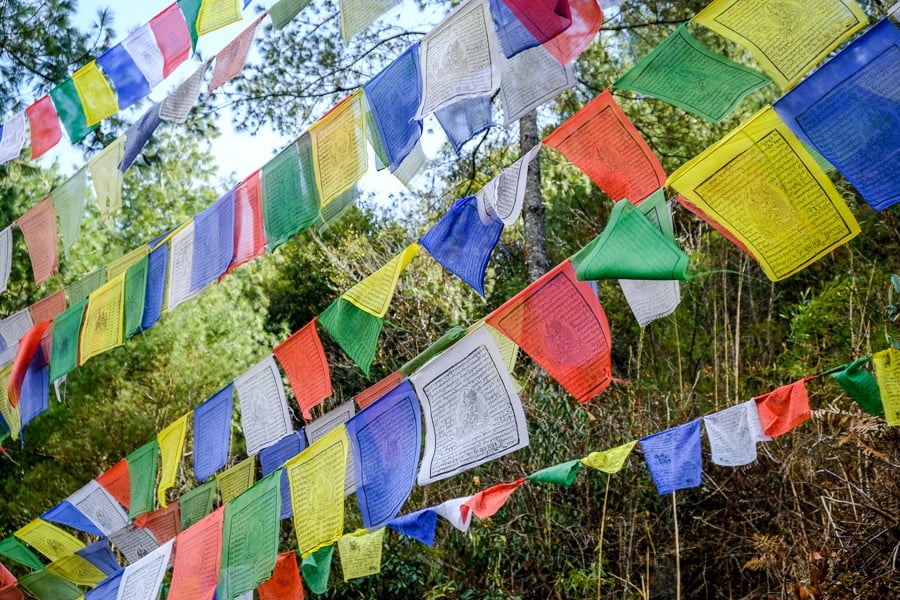
How Much Cash To Bring
Everything you buy during the Everest Base Camp hike (meals, WiFi, charging, etc) will have to be paid for with cash. Credit cards won’t work. There are no ATMs outside of Lukla and Namche Bazaar (Days 1-4), and even the ATMs there are not reliable.
What this means is that you’ll have to withdraw enough cash (Nepalese Rupees) at an ATM in Kathmandu to cover your entire trek. The ATM fees will bite you, and I hate to carry large amounts of cash, but it’s not really avoidable here.
All up, I spent about $20 USD (2,400 Rupees) per day on the Mount Everest Base Camp Trek, and never spent more than $25 USD in a single day. With that said, I didn’t splurge on WiFi, showers, charging, or alcohol. The only things I bought were the bare necessities: room, food, and drinks.
If you hire a porter/guide, you don’t need to factor that into your daily cash carry. That’s paid before the trek starts. But do reserve a little cash for a decent tip.
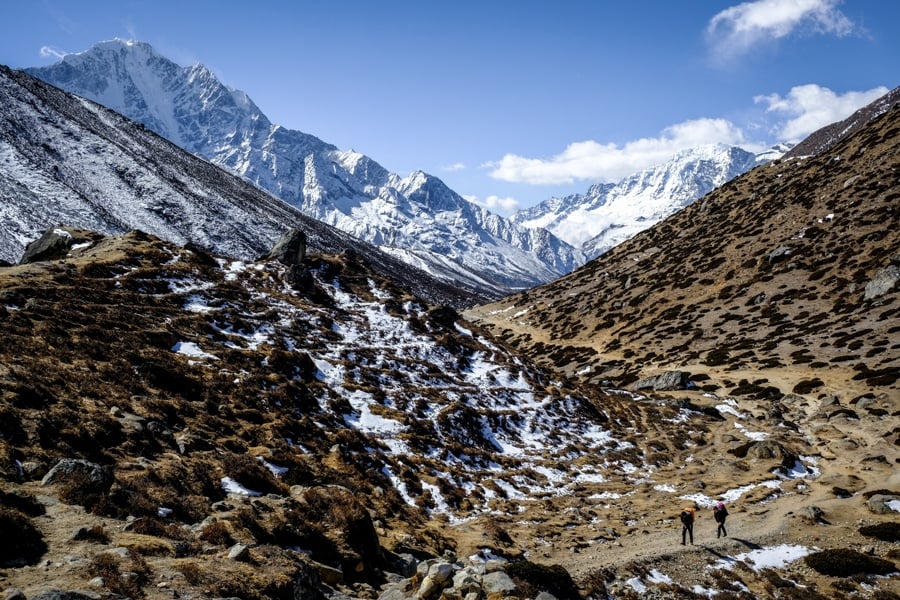
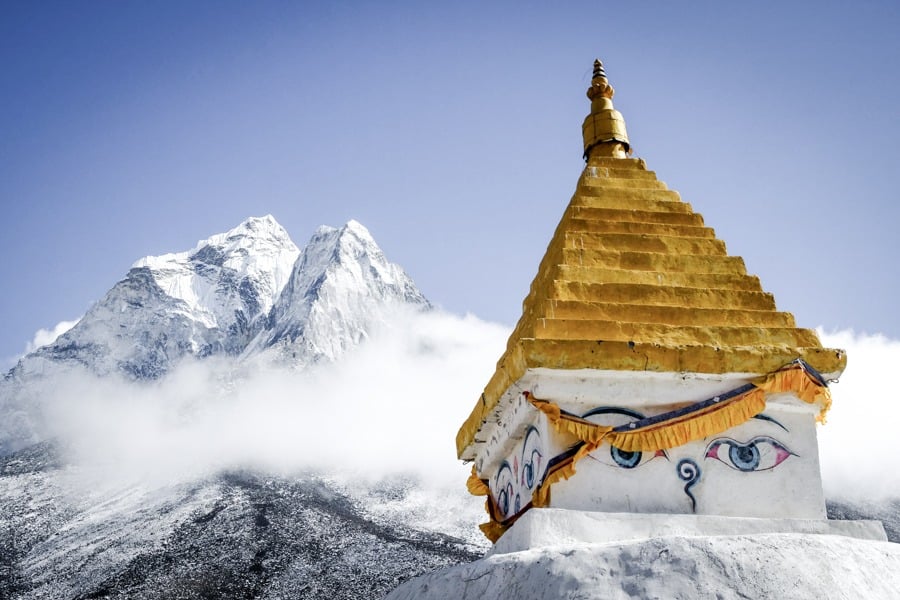
Mount Everest Base Camp Trek Difficulty
I’m not going to lie, this is a difficult trek. And if you do it in the winter like I did, it’s even harder. With that said, if you are in decent shape, determined, and obey the guidelines for altitude sickness prevention (more on that below), then you’ll have no problem reaching base camp.
There is a lot of elevation gain and loss on this hike. At times near Lukla, the constant ups and downs will make you feel like you’re hiking a roller coaster, but the trail is never too steep or dangerous. After Namche, it’s mostly a slow uphill plod.
This trek has been completed by old seasoned hikers in their 70s, and young kids in their pre-teens. It’s also been flunked by healthy 20-30 somethings who try to push through it quickly without enough acclimatization to altitude.
Patience and discipline are key for trekking to Everest Base Camp. Slow and steady wins the race here.
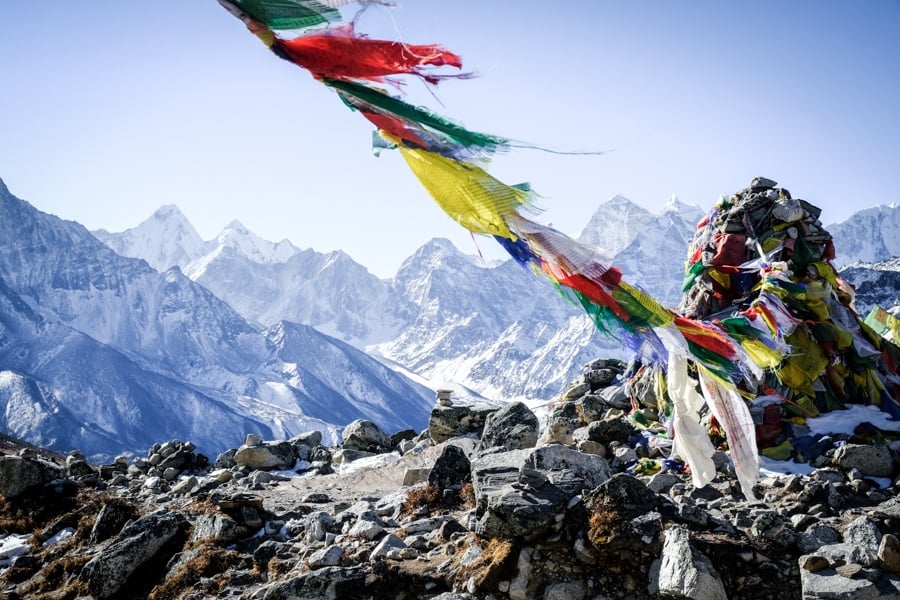
Trekking Distance
The one way trekking distance from Lukla to Mt Everest Base Camp is about 65 kilometers (40 miles).
That means the total roundtrip distance of an EBC Trek is about 130 kilometers, even if you don’t do any of the detours.
Don’t let that scare you off. It’s a lot of hiking, but every step is worth it.
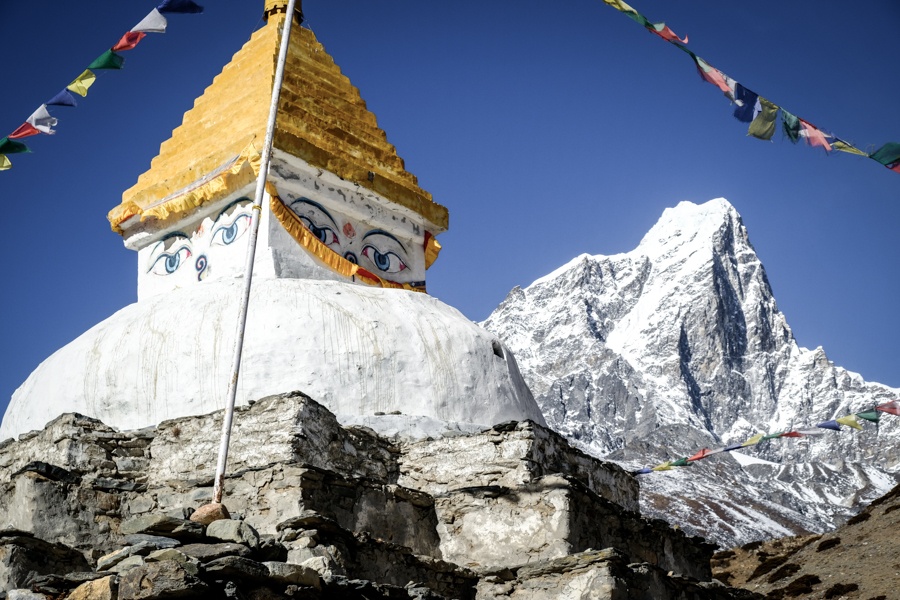
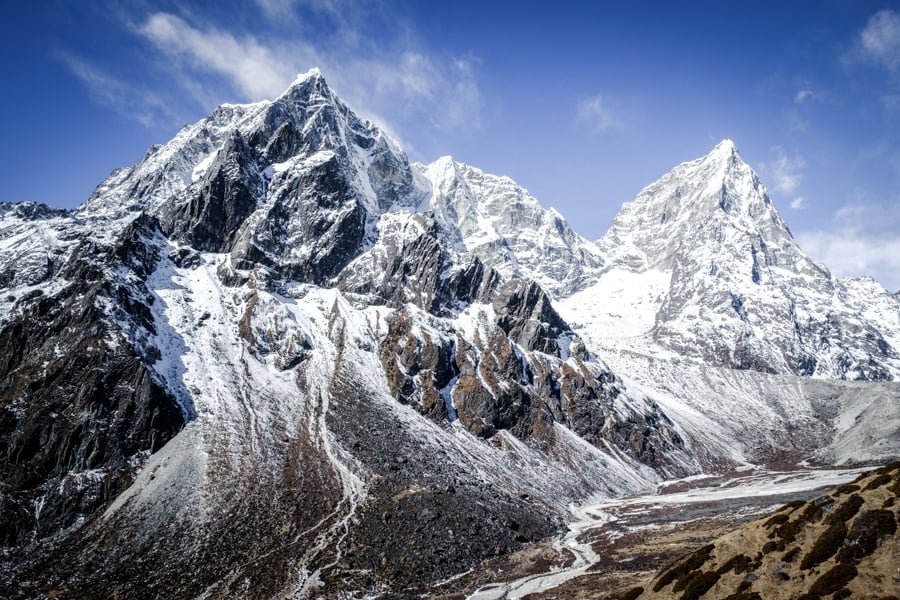
Altitude Sickness
By far your biggest danger on the Mount Everest Base Camp Trek is altitude sickness, also known as Acute Mountain Sickness (AMS).
No one is immune to this, and it doesn’t matter how fit you are. If you gain altitude too fast, you can get sick and in some cases even die. Plenty of people have died from AMS on the EBC Trek.
The problem is that overzealous hikers push the envelope on this hike all the time, and a lot of them end up needing a very expensive helicopter evacuation to lower ground.
The best way to avoid altitude sickness is to go slow. At altitudes above 3,000 meters (10,000 feet), don’t increase your sleeping elevation by more than 300-500 meters (1,000-1,500 feet) per night.
Every 1,000 meters (3,000 feet) you should also spend a second night at the same elevation. If you get a bad headache, dizziness, or nausea, descend to a lower altitude until you feel better. As long as you follow these general guidelines, you shouldn’t have any issues.
You can take Diamox (acetazolamide) on the trek for extra AMS prevention. This medication can be found in Kathmandu or Namche. I bought mine in Namche and it seemed to help my headache and slight foggy feeling. I didn’t have any side effects aside from the usual tingling toes/fingers.

Everest Base Camp Altitude
The Mount Everest Base Camp altitude is 5,364 meters (17,598 feet). At this elevation, there is 50% of the oxygen at sea level.
However, most treks also go to Kala Patthar, a viewpoint even higher than base camp where you can get the best views of Mount Everest.
The elevation at Kala Patthar is 5,644 meters (18,519 feet). From there, you’ll be rewarded with an incredible panorama of Mount Everest and other icy peaks like Pumori, Lhotse, and Nuptse.
Happy travels!
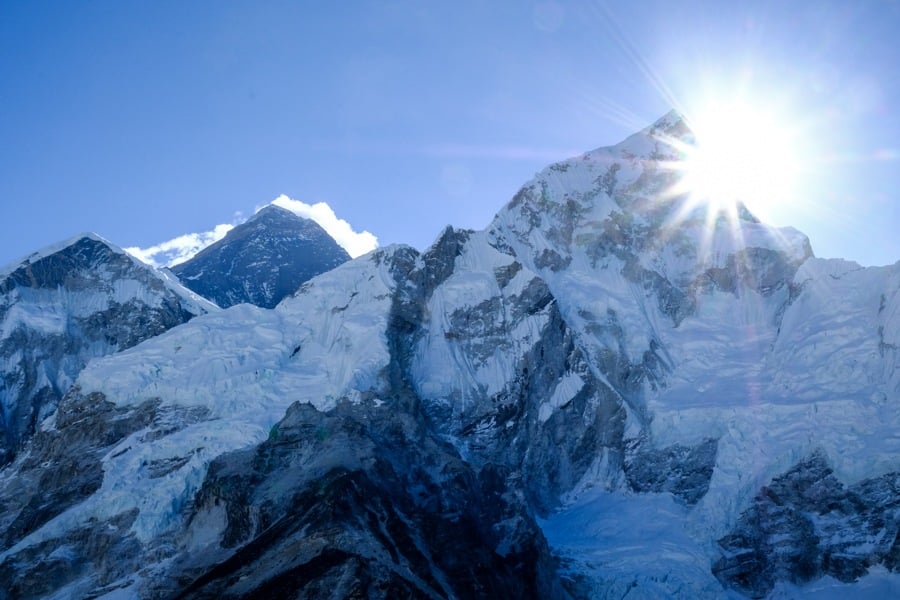
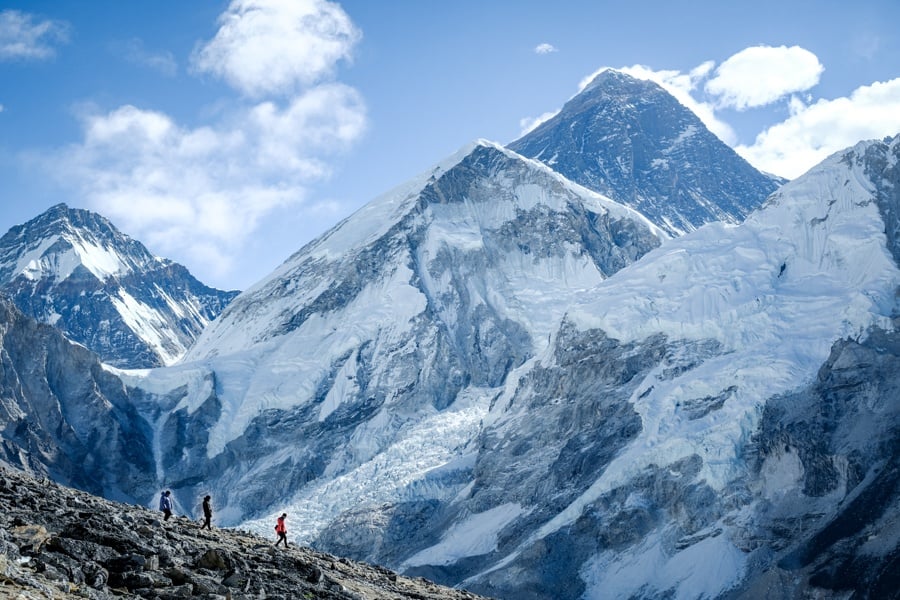
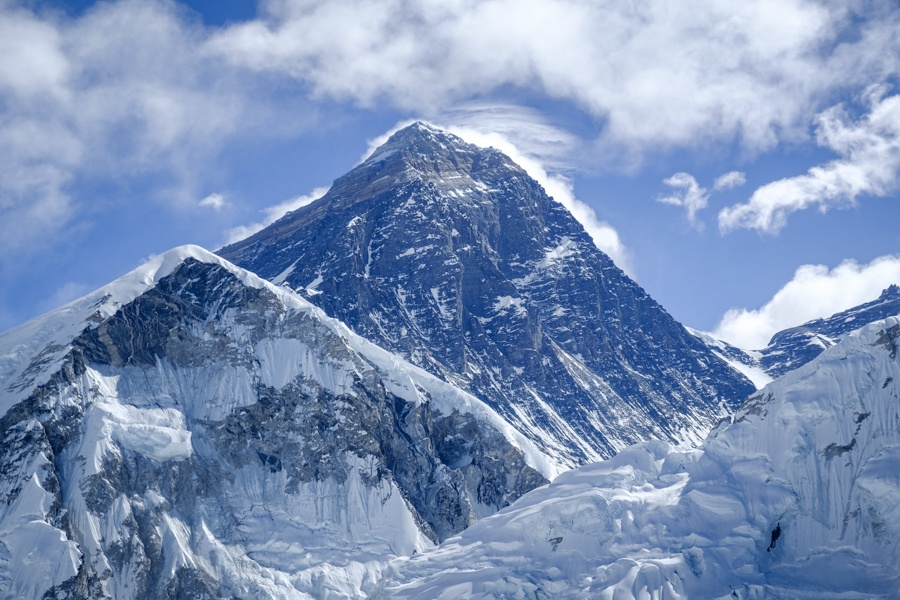
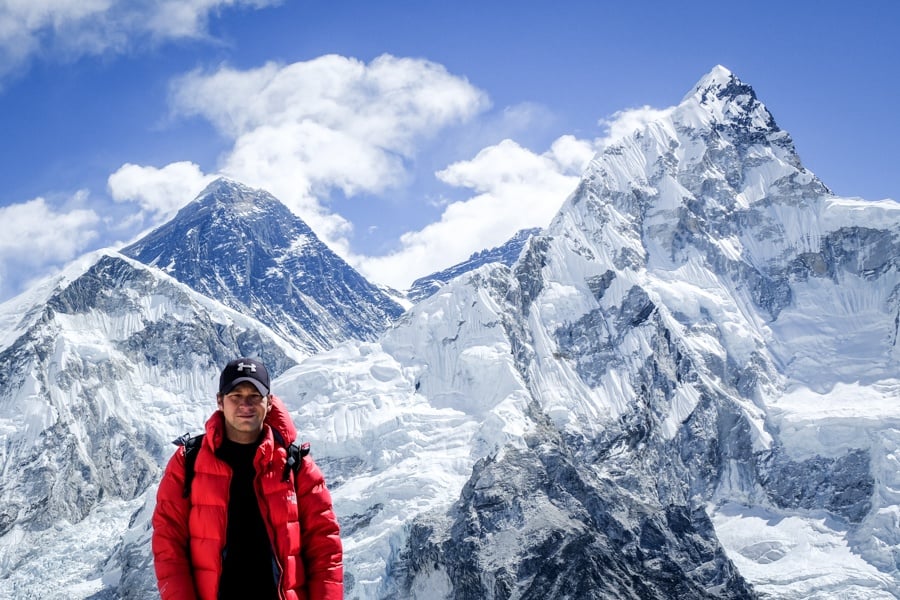
Best Everest Base Camp Tours
If you’d rather skip the hassle of planning your own EBC Trek, Klook has Everest Base Camp Tours starting as low as $900 USD for a full 12-day trek.
You may be able to find something cheaper than this once you land in Kathmandu, but booking online with a vetted tour company has some big advantages, and the reviews on their website are very positive for this Mt Everest Base Camp tour.
We’ve used Klook for lots of tours and activities around the world, and they’re great! Highly recommended.
Book Now: Everest Base Camp Tours
More Nepal Travel Tips
Hopefully you were helped by this guide for the Everest Base Camp Trek. Let me know in the comments below if I can help answer any questions.
Don’t forget to check out my complete Nepal Travel Guide with tips, info, photos & more!
3 comments
So much useful detailed information.
Thanks for the straight forward information. Beautiful photos
Thank you!